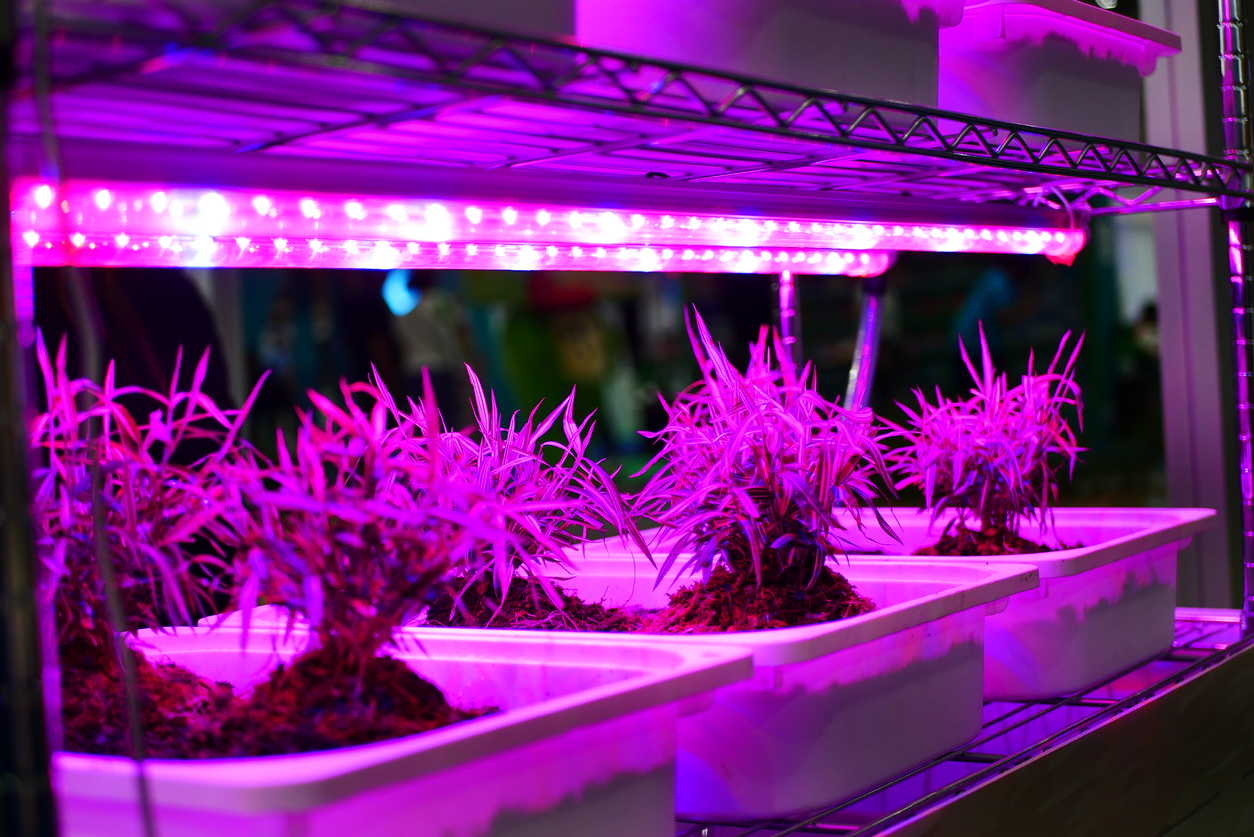
Do you have the perception that LED lighting can only light up rooms and billboards? Then you are wrong. To an increasing extent, LED lighting is used in plant nurseries and greenhouses and for that reason, we take a closer look at how light-emitting diodes can accelerate vegetation as well as the pros and cons related to using LED lighting.
During the last couple of years, LED grow light has become particularly popular in greenhouses. The purpose is to speed up the vegetation process and compared to traditional grow light, there are several advantages related to the use of LED.
Advantages of using LED lighting
In most nurseries, sodium vapour lamps are used as grow light. This has been the case for decades but today, many greenhouses have realized the potential of LED luminaires as grow light. The rate of efficiency is the only advantage of the traditional sodium vapour lamps. This rate is typically 10% higher than the efficiency rate of LED lighting. However, the vast number of LED advantages compensate for this fact.
All plants and crops are different and require different amounts of lighting. Therefore, there is no final prescription for how to illuminate a greenhouse. However, it has been proved that the optimal photosynthesis occurs when the plant is exposed to a mix of red, yellow, and blue light to simulate the circadian rhythm. In order to ensure the best growth conditions, the plants must be exposed to red or yellow light 65-95% of the time. The remaining 5-35% of the time, the plants must be exposed to blue light. Sodium vapour lamps emit a yellowish and uniform light, which affects the plants’ growth conditions. On the other hand, LED lighting allows for adjusting the colour temperature, which is a huge advantage for the nurseries.
Another advantage of LED is that this type of lighting does not emit ultraviolet rays and only a limited amount of infrared rays. This is in contrast with sodium vapour lamps, which generate heat due to the UV and IR rays. This means that the LED luminaires can be installed closer to the plants. If sodium vapour lamps are installed within a short distance from the plants, the risk of ignition is present.
Furthermore, there is a great difference between LED luminaires’ and sodium vapour lamps’ lifetime. Sodium vapour lamps typically have a lifetime of around 10,000 hours, which is five to six times below the lifetime of a light-emitting diode. Seeing that the grow light has to be turned on during most of the day, sodium vapour lamps must be replaced on an annual basis, which can turn out to be a great expense. This replacement can be limited to happen every six years with LED.
Finally, the energy efficiency is a crucial factor, inasmuch as it is possible to save 70% on utility bills. For that reason, LED lighting is a greener and far more economical solution.
